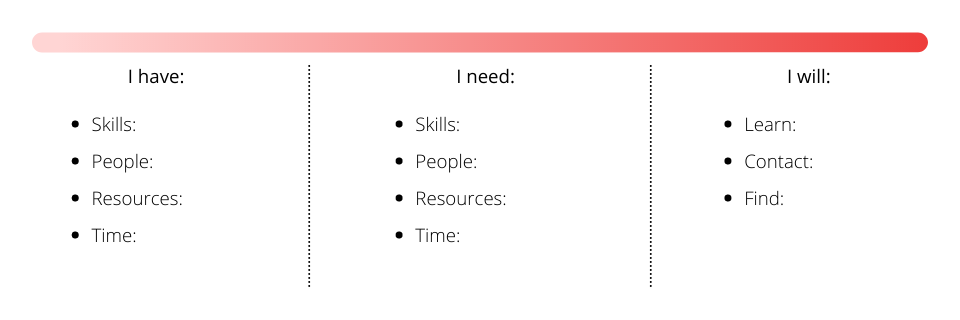As students approach their later years of High School, one question comes up again and again: “How do I do the best extracurricular activities for my college application?”
On the surface, this question makes sense. If you’re a student targeting top colleges, or a parent of such a student, you’ve heard the term “extracurricular activities” thrown around so often that you recall it faster than you recall your own name. Over the years, you’ve come to understand that extracurricular activities are a key way to distinguish an applicant’s profile from all the rest on Common App activities section.
That’s all good and well—in theory. But actually rolling your sleeves up and finding the right opportunities to pursue is easier said than done. There are so many ways a high school student can spend their time: clubs, publications, organizations, charities, performing arts, competitions, sports, hackathons, fellowships, innovation challenges, writer’s programs, research placements, social activism, entrepreneurship, mentorship—the list of viable senior project ideas never ends. The huge array of options you can list under the Common App activities section makes it tricky to decide how to use your free time to increase your chances of getting into your dream school.
But approaching extracurricular activities with the belief that there is a single “best” way to engage with the world is oversimplified. If you do this, you’re bound to get pulled into doing stuff that isn’t actually meaningful to you. Furthermore, there’s an assumption in this mindset that you should be doing extracurriculars for college admissions. Any admissions officer at a highly selective college can tell you that this motivation is not what they’re looking for.
So what exactly are admissions officers looking for? Understanding how to demonstrate your intrinsic motivation is essential to planning out the right senior project ideas for your Common App activities list.
There are no cut and dry rules about extracurriculars. That said, there are a few key traits that the strongest extracurricular profiles usually have. These traits might be shown in different ways through senior projects, but they will always make you a more compelling candidate for admission.
Keep these ideals in mind to remember how you will communicate your extracurricular story to admissions committees using the Common App activities you build through our three-step ELI system. Following these steps will propel you toward senior project ideas that really mean something to you, and which allow you to challenge yourself while taking advantage of your existing skill sets.
To avoid making bad assumptions about extracurriculars, our most successful applicants re-frame their extracurricular questions early. Instead of asking what the “best” ECAs are, they ask themselves: “What do I care the most about, and why?” Though this seems like a basic question, it’s not that easy to answer. And that’s good, because once you get past the knee-jerk stuff, like, “helping people,” everyone’s answer is different. Distinct answers to this question lead to distinctive senior project ideas that appeal to college admissions committees.
We want to help all students get from “What can I do?” to “Here’s a game plan I’m excited to execute.” In order to facilitate this vital first step in extracurricular planning, we’ve created a three-step process that takes you from not knowing what to do, to having a solid plan of action. The overwhelming question of what to do with your free time can be broken down into an actionable plan for how to achieve the right goals for you.
We call this process the ELI approach. ELI stands for Evaluate, Link, & Initiate. Each phase is carefully planned to transition you from cluelessness to action. Evaluation helps you define what you care about. Linking helps you examine your own passions and talents and find meaningful connections. Initiating helps you set your goals and your plan of action.
Note that the last stage in the ELI system is “initiate”: this is a system for setting yourself up for extraordinary activities—it’s not guidance for solving every problem and making every decision while you’re doing the projects themselves. Some processes are too personal to be covered by general guidance. In order to receive advice along the way, you’ll need to find a mentor. As you go through the steps in the ELI process, keep this in mind: are you connecting with anyone who might be willing to help guide you in the long term? If so, how can you develop that relationship?
Below, we’ve broken down the actual three-step ELI process we use with top applicants, which all high school students should find helpful. Use the following framework to define your goals and your strategies for developing a Common App activities profile that matches your character and ambitions.
It’s essential that you define your goals through your own lens, not because of the opinions of parents, siblings, friends, teachers, or strangers on the internet.
To do this, you have to self-assess what matters to you. This is way easier said than done.
To start, make an “activities list” of all the things you currently do in your downtime. This list should be exhaustive: it should include leisure activities, social activities, personal projects, group endeavors, clubs and organizations, sports, music, art, writing, tinkering, building, making, etc.
When you make your activities list, push yourself to take a step back and try to include as much as you can think of. Anything short of mindlessly scrolling through the internet (we all do it sometimes) is worth including.
The next step is to analyze the balance you’re striking in life. Start by categorizing your activities using the simple chart below.

In categorizing activities, split apart the activities that are mostly fun and the activities that are mostly serious. Use some common sense here. You might find lab work fascinating, but let’s be real: it’s serious stuff. Vice versa, you might take video games really seriously, but unless you are a world-class gamer, you are still playing for fun. Then there are things like sports, which could be put into any topic or category based on your level of commitment, talent, and competition.
The point is to grow your self-awareness and understand what types of challenges you really want to tackle. What is essential is your desire to be a better version of yourself, on your own terms.
As with any intensely personal process, the conclusions you draw should be particular to you. With your new insights in hand, it’s time to move to Step 2 and figure out what to do about the goals you’ve begun developing.
Now that you’ve made the categories, it’s time to break them.
OK, not really. Some activities will always stay fun, and others are plain serious. But the most meaningful projects we do in life contain elements of both the fun and the serious. You need to seek these projects out and bring them to life. Here’s how:
Use your responses to parts 1 & 2 to inform part 3. And most importantly: seek the connections with intention. Don’t be satisfied with weak links. Don’t give up if you feel like there’s no connection between video games and business, or reading fantasy books and doing social psychology research. If you start from a realistic understanding of yourself, you will find that it is always possible to come up with connections that matter.
In order to keep these connections exciting, frame them as possibilities using the “What if…?” structure. If you can generate one or more of these strong “What if…?” statements that really get you excited, you’ve set yourself up to turn these notions into decisions.
A well-planned extracurricular activity should be built upon goals that are both challenging and realistic. If you pick up the piano just to learn a couple of Adele songs, you might be limiting the new skills you can build through this challenge. Vice versa, if you launch a business with the goal of generating six-figure revenues in your first year, you may get discouraged when you see how hard it is to actually make that happen.
When you get to the “What if…?” stage, more specific ideas will start popping into your head. It might take a bit of time for your subconscious to work on it, but it will happen. As these ideas occur to you, you want to be intentional in deciding which to pursue.
To decide on a reasonable scope for your activity, first assess your Time and your Resources by answering the following questions.
Time:
Resources:
Then, you’re onto the final step in the ELI Process. This is the game planning phase. It’s a simplified version of the basic activities of making a business plan for a new venture, in which we’ve distilled the biggest components of a solid masterplan. You’ll notice that two of these—resources and time—echo the factors you used to focus the scope of your project. Now, you are reminding yourself of those constraints, but you are also refining them.
In order to gameplan, you need to first assess what you have and what you need. Then you can begin to set objectives.

When put to use in developing and executing senior project ideas, the ELI system works as a strategy to build an impressive college application and appeal to Admissions Committees for a few key reasons:
Whether you’re a computer scientist, a painter, an engineer, a behavioral economist, a researcher, a linguist, a politician, or anything in between, try out this system when you have a free moment. We’re sure you will start to understand yourself better, and you’ll be taking the next steps to defining a well-rounded list of extracurricular activities because of it.
If you have questions and want some free advice, tell us more about yourself using our college admissions “calculator” and we’ll send you free, personalized video feedback on your profile. Want to tell us about the exciting results you’re getting, or ask what to do next? Shoot our expert coach Jason an email!
You could also receive strategic support through comprehensive college admissions consulting. Our experienced College Consultants are here to help you succeed.